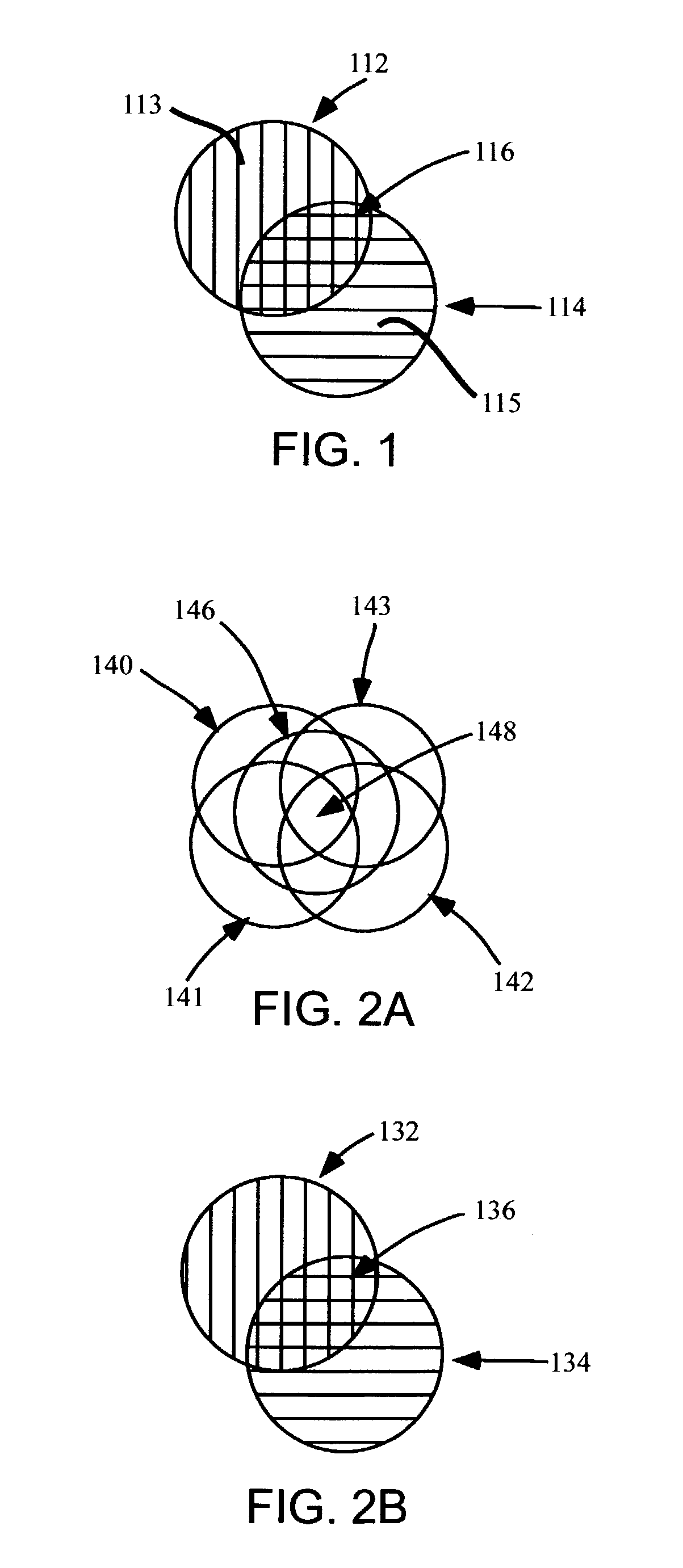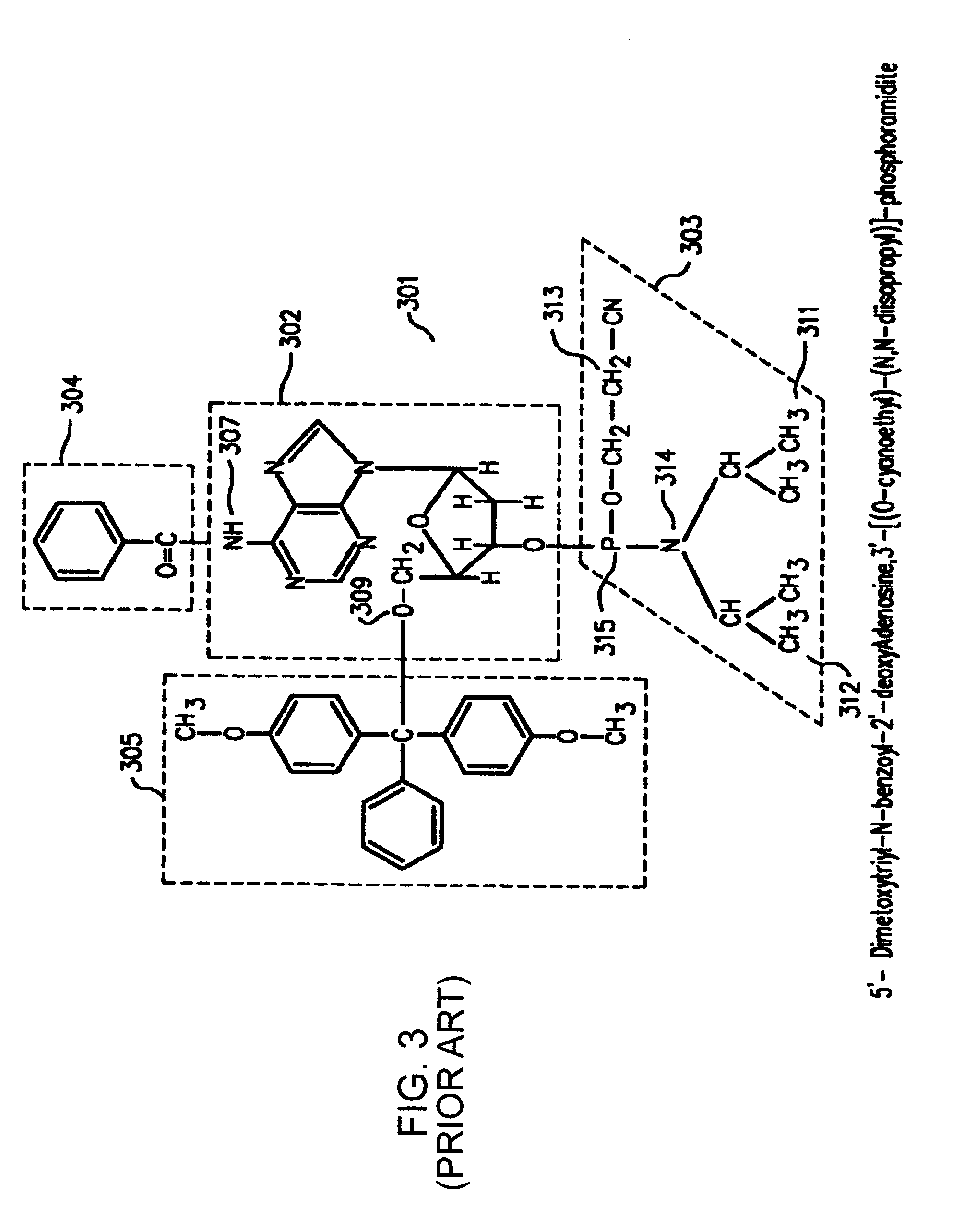Methods and devices for detecting printhead misalignment of an in situ polymeric array synthesis device
- Summary
- Abstract
- Description
- Claims
- Application Information
AI Technical Summary
Benefits of technology
Problems solved by technology
Method used
Image
Examples
example 1
[0123]The quantification of the printhead misalignment of a pulse-jet fluid deposition device (Agilent Technologies, Inc., Palo Alto, Calif.) containing two printheads and two phosphoramidite reservoirs per printhead was performed as follows. In this particular example, G and T phosphoramidites were used as coupling reagents in a first printhead, while C and A phosphoramidites were used as coupling reagents in a second printhead. A microarray containing 25,760 features in a 1027 mm2 area was synthesized on a planar substrate based on standard phosphoramidite chemistry using the fluid deposition device. In this protocol, the phosphoramidite coupling was controlled spatially by deposition of the appropriate phosphoramidite reagent using the printheads. The oxidation, deblock and, optionally, capping reactions, were performed in flowcells in a non spatially controlled manner. The oligonucleotide sequence 3′-CCTATGTGACTGGTCGATGCTACTA (SEQ ID NO:01) was synthesized in individual features...
example 2
[0126]Analogous to example 1, the quantification of the printhead misalignments of a pulse-jet fluid deposition device (Agilent Technologies, Inc.) containing four printheads and one phosphoramidite reservoir per printhead was performed with the following modifications. Because the relative misalignment of each printhead with respect to all other printheads must be determined, the following sequences were synthesized using the same reaction parameters as in example 1: 5′ or 3′-(AC)12(SEQ ID NO:07), 5′ or 3′-(AG)12(SEQ ID NO:08), 5′ or 3′-(AT)12(SEQ ID NO:09), 5′ or 3′-(CG)12(SEQ ID NO:10), 5′ or 3′-(CT)12(SEQ ID NO:11), and 5′ or 3′-(GT)12(SEQ ID NO:12), as well as 5′ or 3′-(AA)12(SEQ ID NO:13), 5′ or 3′-(CC)12(SEQ ID NO:14), 5′ or 3′-(GG)12(SEQ ID NO:15) and 5′ or 3′-(TT)12(SEQ ID NO:16) as controls. The target sequences utilized during hybridization were modified to contain 3′-(G)12-Cy5 (SEQ ID NO:17), 3′-(C)12-Cy5 (SEQ ID NO:18), 3′-(T)12-Cy5 (SEQ ID NO:19), 3′-(A)12-Cy3 (SEQ ID ...
PUM
| Property | Measurement | Unit |
|---|---|---|
| Fluorescence | aaaaa | aaaaa |
Abstract
Description
Claims
Application Information
 Login to view more
Login to view more - R&D Engineer
- R&D Manager
- IP Professional
- Industry Leading Data Capabilities
- Powerful AI technology
- Patent DNA Extraction
Browse by: Latest US Patents, China's latest patents, Technical Efficacy Thesaurus, Application Domain, Technology Topic.
© 2024 PatSnap. All rights reserved.Legal|Privacy policy|Modern Slavery Act Transparency Statement|Sitemap



